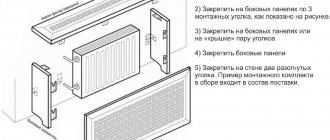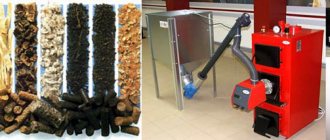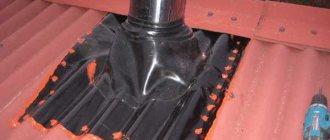It is difficult to deny that compressed sawdust briquettes are one of the most efficient types of fuel successfully used for heating residential buildings.
They have a high calorie content (about 5 kW is released from 1 kg when burned) and have a low ash content. Such briquettes are very convenient to store and stack, as they fold compactly and do not take up much space. True, such fuel cannot be considered cheap: not every family can afford to heat their home with wood throughout the entire season. This raises a reasonable question: is it somehow possible to make wonderful fuel briquettes with your own hands. This is especially true in cases where the raw materials can be purchased almost at a bargain price. Fortunately, such techniques exist, and they may differ from each other. Let's look at some of them.
[contents]
Production of briquettes in production
To get a clear understanding of how to make briquettes yourself, including for the Buleryan stove, you first need to know how they are made in a factory.
Raw materials
Any of the available methods is preceded by a preparatory stage, during which the raw materials are crushed and dried.
The raw materials are sawdust and some larger parts of wood processing waste. Drying is carried out until humidity levels approach 8-10 percent. Interestingly, all kinds of agro-industrial waste (for example, husks or seed husks) and coal dust can also be used as raw materials for Eurofirewood.
Briquetting
The next production process is sawdust pressing, or briquetting. Today this can be done in two different ways:
- Extrusion method;
- Forming briquettes on a special hydraulic press.
In both cases, as a result of powerful compression of crushed wood, lignin, a special natural substance, begins to be released from it. It is this that becomes the binding composition for the crumbly mass of raw materials. The difference in the processes consists only in different compression methods. In one case, a hydraulic press is used, capable of developing a force of up to 300-600 Bar.
The force of this compression heats the shredded wood, and this contributes to the formation of a solid rectangular briquette.
With another method, extrusion, wood raw materials are poured into a special hopper of the unit, and, by analogy with a meat grinder, it is moved by a screw into a conical working channel, which narrows. It is there that the compression takes place, during which the screw press develops an incredibly powerful force of up to one thousand bar.
When ready, firewood made from sawdust comes out of the extruder in the form of hexagons. Before this, they undergo heat treatment and are cut with a special knife to exact dimensions.
Benefits of sawdust logs
The following arguments can be given in favor of briquettes pressed from sawdust:
- Long burning time - 4 hours.
- Minimal smoke generation.
- Environmentally friendly. The starting materials are natural materials, so you can fertilize the beds with ash.
- High energy output. It far exceeds the energy capabilities of firewood and is comparable only to high-quality coal.
- Constant combustion temperature.
- Economical. The cost of 1 ton of such fuel will be cheaper than the corresponding amount of firewood or coal.
- Possibility of self-production.
There are also disadvantages. The main one is the fear of moisture. They cannot be stored in the open air, because... they will quickly absorb moisture and therefore will burn poorly. Therefore, it is necessary to allocate a dry room for storage.
Any significant mechanical impact on sawdust briquettes is contraindicated. If you buy special equipment for their production, the cost will be high and not always justified.
Replacing coal and firewood with sawdust briquettes makes heating a country home more environmentally friendly. While heating with wet wood leads to the release of harmful substances, “Eurowood” is completely safe in this regard
It is profitable to set up handicraft production if the sawdust is free, and you can use existing equipment for installation.
Fuel briquettes at home
It is completely unrealistic to imagine a situation where someone decides to purchase such a powerful unit capable of pressing briquettes at home. Even if finances allow this to be done, and the raw materials will be obtained for free, the purchase will only be recouped if the produced fuel is sold on a large scale.
In other words, it is clear that it will not be possible to implement the traditional method, which would release lignin, at home. But numerous home craftsmen, through trial and error, learned to use other binding materials.
Raw materials and preparation
- corrugated cardboard, paper;
- the cheapest glue, for example, wallpaper;
- clay.
To make fuel briquettes at home, it is not at all necessary to purchase expensive pressing and drying equipment. At home, things are done differently.
Savvy homeowners have gotten the hang of pressing heating briquettes from a variety of available materials that can burn:
- from paper,
- leaves,
- straw,
- cardboard,
- seed husks and other things.
- Sawdust is placed in water, clay is added there in a ratio of 1 to 10, stirred well, then inexpensive wallpaper glue or soaked cardboard is added to the composition.
- The mixture obtained in this way is placed in a homemade pressing mold, and squeezed as hard as possible using hand force.
- The formed rectangles are taken out of the mold and laid out to dry outside, naturally.
Manual screw mechanism
The simplest press for the production of fuel bars, which you can make yourself, has a manual screw drive.
The design of this mechanism is extremely simple. But the productivity of such a screw device is low - this explains their low popularity.
A special molding container with holes is filled with the finished mixture, the screw is tightened tightly, creating increased pressure.
When using them, a lot of time is spent filling the container, twisting the mold and removing the formed briquette.
Brick ejection mechanism
It is much easier and much faster to extrude molded briquettes on another press. It is also homemade, but features a long lever and a special device for pushing out the brick. To speed up the process, some people weld not one mold, but a pair, to the frame.
Some craftsmen are capable of producing other, more advanced equipment. How to increase the productivity of a manual machine? By installing a hydraulic jack instead of a manual drive. Of course, to produce such a unit you will have to put in a lot of effort, but the result deserves it.
Note! It will not be possible to create a pressure reaching at least 300 Bar in a homemade press even with the help of a hydraulic jack. It is unlikely that it will be possible to reproduce the factory technology at home without adding water.
Screw press
However, some craftsmen, despite difficulties with parts, managed to produce a screw press. With its help, it is possible to produce heating bricks of fairly high quality.
Craftsmen write about this on forums, but at the same time they note the rather high costs of a housing made of high-strength steel and the manufacture of screw parts. Of course, in this case you cannot do without an electric drive. A motor of at least 7 kW power will be required.
Necessary equipment
Despite the relative ease of obtaining fuel, you still have to acquire some equipment. Or adapt existing ones to new needs. What you will need:
- Chopper. You can’t do without it, because the finer the raw material, the denser the finished briquette. And when making it with your own hands, materials of various fractions are used. You won’t have to spend money on purchases if your farm has a device that chops vegetation to send it to compost. Inventors with skillful hands adapt an old activator-type washing machine for a shredder - they change the activator itself with knives;
- Any container where the raw materials will be mixed before being placed in the matrix. It would be a good idea to supplement the “trough” with a miniature concrete mixer or construction mixer. In the absence of both, get ready for hard physical work of kneading raw materials;
You can make a briquetting press yourself
- Press for the production of fuel briquettes. It can be manual or hydraulic, wall or floor mounted. In general terms, a press for the production of briquettes from sawdust and other plant waste consists of a solid frame made of steel and what can be called a working part;
- Matrices with which briquettes will be formed. They can be in the form of standard bricks, but it is more convenient to use cylindrical shapes - less fuss. Although warehousing and storing will be somewhat more difficult. The matrix must have perforated walls: moisture squeezed out of the workpiece by the press will be removed through the holes.
Particular attention should be paid to the moment of pressing. Muscular effects are a waste of time and effort with low efficiency. Experienced craftsmen recommend equipping the press for the production of fuel briquettes with a hydraulic jack from a car. It should be fixed upside down on the upper frame of the press.
Press device
To mount a simple structure in the form of a piston press, you will need a cylindrical metal base, which must be removable . Then a piston press with the required diameter is selected to it. You also need to make a special lever with which the piston will be driven.
Then you need to connect all the prepared parts on a metal frame, and the sawdust pressing device is considered ready. But it is immediately worth noting that the installation will produce briquettes of low density.
Better results can be obtained from a screw press; manufacturing such a device will also not be difficult. First you need to prepare a metal frame, and through it the screw with the piston will be rotated. A wide handle needs to be attached to the upper part; with its help, the pressure necessary for pressing will be created. This method produces higher quality briquettes.
In addition to these options, there are many other ways to make a homemade press. Each master decides for himself which model to choose, depending on the available material and skill. The main thing is that the device applies maximum pressure to the sawdust.
How to make your own abs
To make a briquette press with your own hands, you need to stock up on some materials and available tools. In addition to the main component, you will also have to buy different types of rolled steel:
- channel;
- corner measuring 100x100 mm;
- a sheet 3-6 mm thick from which you will need to cut a punch. The thickness of the workpiece is determined by the diameter of the matrix.
It is also necessary to prepare a pipe with a cross-section of 25-30 mm for the manufacture of the punch rod, a thick-walled pipe for the matrix and a larger one for the body. In the absence of such material, the drum can be created from a sheet of tin. Also, galvanized steel is prepared for the upcoming work - trays are created from it.
The machine is assembled according to the following instructions:
- Equip the base of the device. It is created from channels using a welding machine.
- Based on the angle, four 1.5 m long posts are made. They are welded vertically with the same pitch.
- Next, a drum is created from a steel pipe or sheet of tin, where the feedstock will be mixed. If you have a broken washing machine in your house, you can remove the drum from it.
- The drum structure is then welded to the racks. If possible, it is better to equip it with an engine. If the power plant creates strong vibrations during operation and its rotation speed is too high, this can be solved using a gearbox.
- A tray is installed under the drum through which the raw materials will be fed into the matrix.
- At the bottom of the matrix there is a flange to which a removable bottom is screwed. It will require a steel sheet.
- Then you need to weld or screw the matrix to the base.
- A round punch is cut from a sheet of steel. Instead, you can use a regular disk of suitable diameter.
The briquetting press is designed for the production of fuel briquettes from soft and hard wood sawdust, sunflower husks and other plant waste











